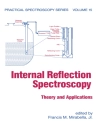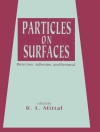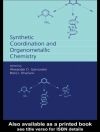This book provides a clear and understandable text for users and
developers of advanced engineered materials, particularly in the
area of thin films, and addresses fundamentals of modifying the
optical, electrical, photo-electric, triboligical, and corrosion
resistance of solid surfaces and adding functionality to solids by
engineering their surface, structure, and electronic, magnetic and
optical structure. Thin film applications are emphasized. Through
the inclusion of multiple clear examples of the technologies, how
to use them, and the synthesis processes involved, the reader will
gain a deep understanding of the purpose, goals, and methodology of
surface engineering and engineered materials.
Virtually every advance in thin film, energy, medical,
tribological materials technologies has resulted from surface
engineering and engineered materials. Surface engineering involves
structures and compositions not found naturally in solids and is
used to modify the surface properties of solids and involves
application of thin film coatings, surface functionalization and
activation, and plasma treatment. Engineered materials are the
future of thin film technology. Engineered structures such as
superlattices, nanolaminates, nanotubes, nanocomposites, smart
materials, photonic bandgap materials, metamaterials, molecularly
doped polymers and structured materials all have the capacity to
expand and increase the functionality of thin films and coatings
used in a variety of applications and provide new applications. New
advanced deposition processes and hybrid processes are being used
and developed to deposit advanced thin film materials and
structures not possible with conventional techniques a decade ago.
Properties can now be engineered into thin films that achieve
performance not possible a decade ago.
Tabela de Conteúdo
1 Properties of Solid Surfaces 1
1.1 Introduction 1
1.2 Tribological Properties of Solid Surfaces 7
1.3 Optical Properties of Solid Surfaces 25
1.4 Electrical and Opto-electronic Properties of Solid Surfaces 29
1.5 Corrosion of Solid Surfaces34
2 Thin Film Deposition Processes 39
2.1 Physical Vapor Deposition 40
2.2 Chemical Vapor Deposition 90
2.3 Pulsed Laser Deposition 114
2.4 Hybrid Deposition Processes 120
3 Thin Film Structures and Defects 143
3.1 Thin Film Nucleation and Growth 144
3.2 Structure of Thin Films 155
3.3 Thin Film Structure Zone Models 172
4. Thin Film Tribological Materials 187
4.1 Wear Resistant Thin Film Materials 188
4.2 Ultrifunctional Nanostructured, Nanolaminate and Nanocomposite Triboligical Materials 256
5. Optical Thin Films and Composites 283
5.1 Optical Properties at an Interface 285
5.2 Single Layer Optical Coatings 292
5.3 Multilayer Thin Film Optical Coatings 296
5.4 Color and Chromaticity in Thin Films 307
5.5 Decorative and Architectural Coatings 330
6 Fabrication Processes for Electrical and Electro-Optical Thin Films 337
6.1 Plasma Processing: Introduction 338
6.2 Etching Processes 347
6.3 Wet Chemical Etching 359
6.4 Metallization 360
6.5 Photolithography 368
6.6 Deposition Process for Piezoelectric and Ferroelectric Thin Films 372
6.7 Deposition Processes for Semiconductor Thin Films 376
7 Functionally Engineered Materials 387
7.1 Energy Band Structure of Solids 388
7.2 Low Dimensional Structures 392
7.3 Energy Band Engineering 400
7.4 Artificially Structured and Sculpted Micro and Nano Structures 431
8.0 Multifunctional Surface Engineering Applications 457
8.1 Thin Film Photovoltaics 457
8.2 Transparent Conductive Oxide Thin Films 462
8.3 Electrochromic and Thermochromic Coatings 480
8.4 Thin Film Permeation barriers 485
8.5 Photocatalytic Thin Films and Low Dimensional Structures 493
8.6 Frequency selective surfaces 498
9 Looking into the Future: Bio-Inspired Materials and Surfaces 509
9.1 Functional Biomaterials 509
9.2 Functional Biomaterials: Self Cleaning Biological Materials 515
9.3 Functional Biomaterials: Self Healing Biological Materials 522
9.4 Self Assembled and Composite Nanostructures 521
9.5 Introduction to Biophotonics 536
9.6 Advanced Biophotonics Applications 545
Index 559
Sobre o autor
Peter Martin worked at Battelle, Pacific Northwest
Laboratory (BNW) for over 29 years where he currently holds an
Emeritus Laboratory Fellow appointment, and specializes in
developing thin film coatings for energy, biomedical, space and
defense applications. He pioneered the use of reactive magnetron
sputtering technology to fabricate novel and advanced optical
coating materials and specializes in large area optical and thin
film coating development. He has also led development of high
performance large area ground-based and space-based laser mirrors
for DOD applications.
Dr. Martin has written over 400 technical publications. He has won
three R&D 100 Awards for his work in microfabrication and
barrier coatings for flat panel displays, has two FLC awards, was
awarded Battelle Technology of the Year (2003) for his work with
the photolytic artificial lung, and voted Distinguished Inventor
and PNNL 2005 Inventor of the Year. He has 26 US patents and
numerous foreign and pending patents. He also teaches short courses
on smart materials and energy materials and applications.












